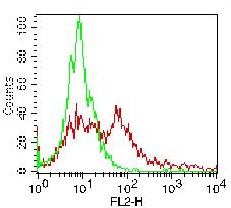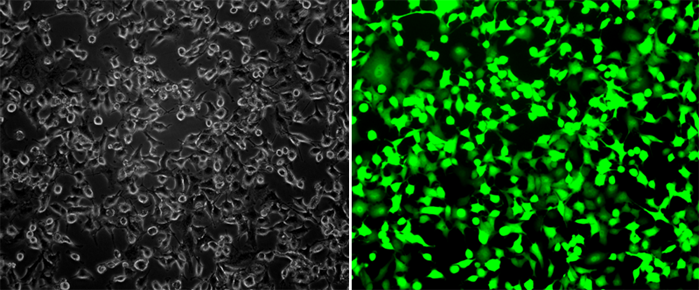Mouse Monoclonal Antibody to VEGFC (Clone: 197CT7.3.4)(Discontinued)

Figure 1: All lanes : Anti-VEGFC antibody (10-6550) at 1:2000 dilution with Lane 1: CCRF-CEM whole cell lysate, Lane 2: 293 whole cell lysate, Lane 3: HepG2 whole cell lysate, Lane 4: mouse heart lysate, Lane 5: rat heart lysates/proteins at 20 µg per lane. Secondary Goat Anti-mouse IgG (H+L), Peroxidase conjugated at 1/10000 dilution. Predicted band size : 47 kDa.
Roll over image to zoom in
Shipping Info:
For estimated delivery dates, please contact us at [email protected]
| Format : | Purified |
| Amount : | 400 µl |
| Isotype : | Mouse IgG1,Kappa |
| Purification : | Protein G Chromatography |
| Content : | Purified monoclonal antibody supplied in PBS with 0.09% (W/V) sodium azide. |
| Storage condition : | Maintain refrigerated at 2-8°C for up to 2 weeks. For long term store at -20°C in small aliquots to prevent freeze-thaw cycles. |
The protein encoded by this gene is a member of the platelet-derived growth factor/vascular endothelial growth factor (PDGF/VEGF) family, is active in angiogenesis and endothelial cell growth, and can also affect the permeability of blood vessels. This secreted protein undergoes a complex proteolytic maturation, generating multiple processed forms which bind and activate VEGFR-3 receptors. Only the fully processed form can bind and activate VEGFR-2 receptors. This protein is structurally and functionally similar to vascular endothelial growth factor D. [provided by RefSeq].
WB~1:1000-2000
For Research Use Only. Not for use in diagnostic/therapeutics procedures.
| Subcellular location: | Secreted |
| Post transnational modification: | Undergoes a complex proteolytic maturation which generates a variety of processed secreted forms with increased activity toward VEGFR-3, but only the fully processed form could activate VEGFR-2. VEGF-C first form an antiparallel homodimer linked by disulfide bonds. Before secretion, a cleavage occurs between Arg-227 and Ser-228 producing a heterotetramer. The next extracellular step of the processing removes the N-terminal propeptide. Finally the mature VEGF-C is composed mostly of two VEGF homology domains (VHDs) bound by non-covalent interactions. |
| Tissue Specificity: | Spleen, lymph node, thymus, appendix, bone marrow, heart, placenta, ovary, skeletal muscle, prostate, testis, colon and small intestine and fetal liver, lung and kidney, but not in peripheral blood lymphocyte. |
| BioGrid: | 113267. 2 interactions. |
|
There are currently no product reviews
|





















.png)













